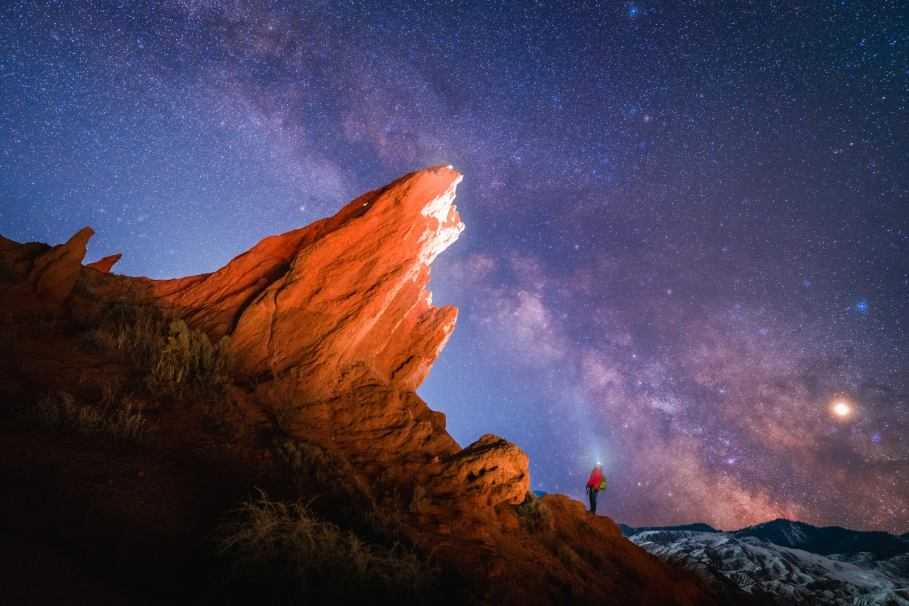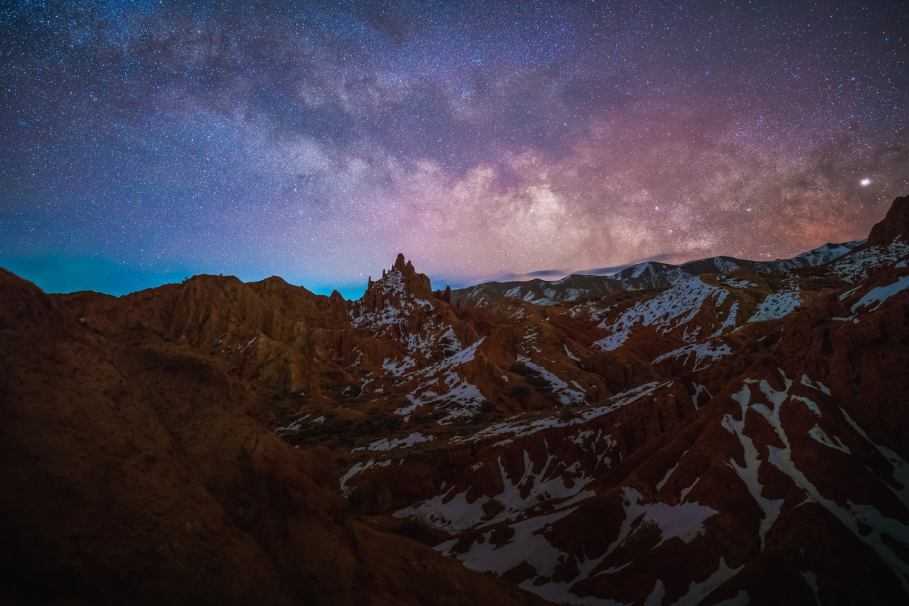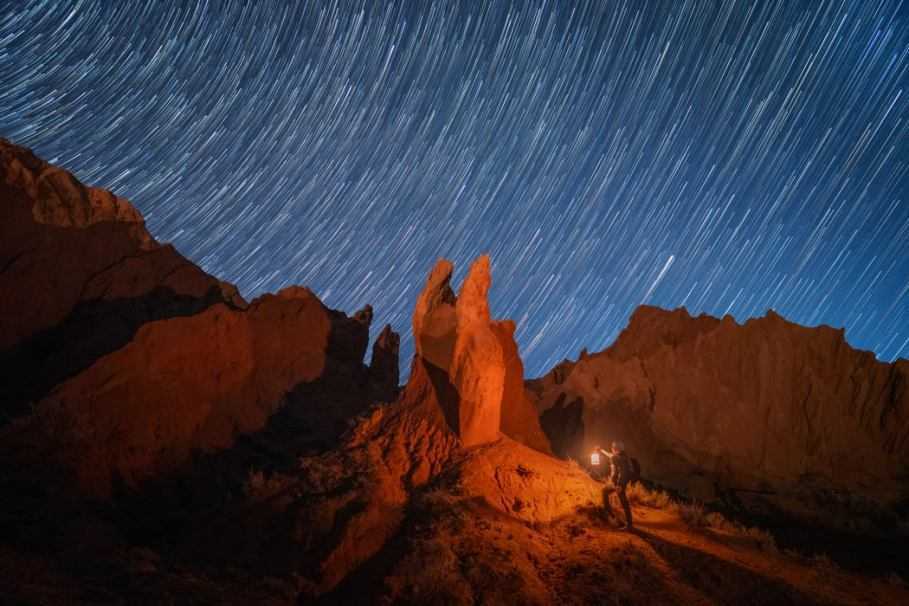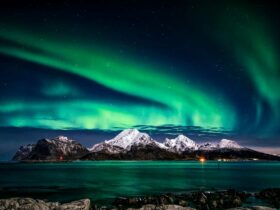Let’s find out how to photograph the starry sky with Sony Alpha and the tips to immortalize the most important star events of 2019
Don’t miss the five main astronomical events of 2019, from the supermoon of 21 March to the rain of the Geminids in December. Whatever your destination this year, make sure you have the right equipment to portray the magic of the starry skies.
How to photograph the starry night sky with Sony Alpha
With the approach of International Dark Sky Week on March 31st, Sony has collaborated with some leading astrophotographers to give greater visibility to this year’s astronomical wonders and provide insiders with advice on when, where and how to capture the perfect shot. From the Milky Way to incredible showers of stars, European astrophotographers Albert Dros, Andrew Whyte, Alexander Heinrichs and Leonardo Orazi show us how, with the Sony 24mm F1.4 GM lens, the ideal shots can be achieved.

Not just any accessory, but the ad hoc optics for extremely detailed and sharp night images, without unwanted reflections originating from the glass. The five main astronomical events to be immortalized in 2019:
- The supermoon (21 March) The terrestrial satellite reaches the closest point to our planet for the last supermoon of 2019. An unmissable opportunity, to be combined with an equally unique panorama.
- Aquarid Age Meteor Shower (May 6-7) Probably the best chance to see a meteor shower this year, thanks to the thin crescent moon giving way to an inky black sky. The ideal backdrop for a breathtaking show.
- Total Eclipse of the Sun (July 2) This eclipse will not affect Europe, but can be admired by anyone heading to South America or the Pacific area. However, remember never to look directly at the sun, even during eclipses.
- Partial Eclipse of the Moon (July 16) A limited part of the lunar surface will be covered by the darker portion of the Earth’s shadow. A phenomenon visible from much of Europe, as well as from Africa, Central Asia and the Indian Ocean.
- Geminid Meteor Shower (December 14) The sky will be illuminated by shooting stars for about a week, but the peak is expected on the 14th, when it will be possible to observe up to 100 meteorites per hour.
Best European destinations from which to observe the night sky
According to Bettymaya Foott of the International Dark-Sky Association, summer is the perfect time to catch a glimpse of the Milky Way’s Galactic Center, but winter also has its advantages. Many European destinations can be enjoyed with the nose up:
- Exmoor National Park, UK. Like many other British national parks, Exmoor enjoys one of the best night sky perspectives in Britain. Declared Dark Sky Reserve in 2011, it has minimal light pollution. Equipped with many scenic spots that are easily accessible even at night, it is far enough south to allow sighting of the Milky Way from March to September.
- La Palma, Canary Islands. In the Atlantic, some distance from continental Europe, La Palma offers not only a mild and stable climate, but also ideal views of the night sky all year round. At the top of the island, the clouds disappear to make room for an exceptional view of the Milky Way.
- Dolomites, Italy. With an irresistible mountain panorama and an ideal climate for skiing in the winter and sunbathing in the summer, the clear skies of the Dolomites allow for optimal shots twelve months a year.
- Bükk National Park, Hungary. Mountainous Bükk is Hungary’s largest national park, located among the highest peaks in the country and surrounded by bewitching caves and waterfalls. It was named Dark Sky Park in 2017.
- Cevennes National Park, France. Among the latest additions to the list of Dark Sky sites, Cévennes is located in an area known for tourism and camping – an ideal combination for spending magical summer nights under the stars.

The story behind the common imagination: the Milky Way (Albert Dros, Netherlands)
Known for its jaw-dropping and mystical character, the Milky Way is a favorite among night sky lovers. Award-winning photographer Albert Dros, originally from the Netherlands, he recently immortalized all the poetry of the Milky Way from a canyon in Kyrgyzstan, on Lake Issyk-Kul. He has declared:
The night sky is infinitely beautiful and, for this, you travel long distances to admire its amazing charm. Fortunately, the new 24mm F1.4 GM lens allows you to capture a great deal of detail and eliminate sagittal flare, making much of the work easier to reproduce the most beautiful scenes with ease.
The story behind the common imagination: the trails of stars (Leonardo Orazi, Italy)
The Italian astrophotographer Leonardo Orazi he portrayed a bewitching trail of stars near Sestrière, in the Alps, with the lens Sony 24 mm F1.4 GM. He has declared:
Often, my best shots come from the Alps. I love the peace and tranquility they convey, but above all the clear, dark skies from which the perfect image can arise. For my hikes in the mountains it is essential to have light equipment. At 400 grams, the new Sony lens is the best ally I could have.
The story behind the common imaginary: the supermoon (Andrew Whyte, UK)
The next supermoon is expected on March 21st. For this occasion, photographer Andrew Whyte explains how to portray her in all her glory at the point of closest proximity to Earth. According to his experience:
There are many different ways to best reproduce the supermoon: from classic close-ups with featured subjects to larger images that enclose the night sky. For an optimal result, you have to pay close attention to the equipment used. The Sony 24mm F1.4 GM lens captures detail and eliminates sagittal flare, thus helping me do what I do best.
What do you think about it? Let us know in the comments and keep following us on the TechGameWorld.com pages!
Nb: the photos in this article were taken by photographer Albert Dros (Netherlands).















